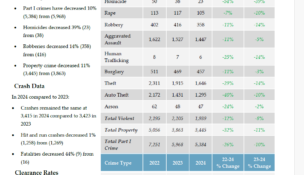High court: Judges may use assessment in sentencing
By: Erika Strebel, [email protected]//July 13, 2016//
High court: Judges may use assessment in sentencing
By: Erika Strebel, [email protected]//July 13, 2016//
The Wisconsin Supreme Court has found that an assessment system used to gauge a person’s risk of recidivism was properly taken into account when a judge sentenced a man for his role in a drive-by shooting.
Wednesday’s decision stems from a La Crosse man’s appeal of his conviction in 2013 for operating a vehicle without an owner’s consent and attempting to flee or elude an officer, among other crimes. Eric Loomis was sentenced to six years in jail plus five years of extended supervision.
Loomis later made a re-sentencing motion. His main argument was that the circuit court that had heard his case had violated his due-process rights by taking into account an assessment of the chances that he would commit crimes again.
La Crosse County Circuit Court Judge Scott Horne denied the motion. On appeal, Loomis argued that the assessment was inaccurate and, because it took into account his sex, could not be used without violating his constitutional right to due process.
The assessment was part of Loomis’ pre-sentencing report. Such reports are often used to summarize the history of a person who has been convicted of a crime. The goal is to find out if certain circumstances exist warranting a lesser or greater sentence.
Loomis’ report contained a score predicting his recidivism risk. The trial judge said Loomis’ score influenced his sentencing.
The assessment system used in Loomis’ case is called the Correctional Offender Management Profiling for Alternative Sanctions. One component of the assessment assigns a score on a scale of 1 to 10; a 10 indicates a person is highly likely to re-offend.
The Court of Appeals certified the case to the Supreme Court, which took the case in January and heard oral arguments in April.
The justices on Wednesday voted 7-0 to affirm Horne’s order. Chief Justice Pat Roggensack and Justice Shirley Abrahamson concurred.
State trial courts may use such assessments as long as they are not the only things judges consider, according to the decision, which was written by Justice Ann Walsh Bradley.
“We determine that because the circuit court explained that its consideration of the COMPAS risk scores was supported by other independent factors, its use was not determinative in deciding whether Loomis could be supervised safely and effectively in the community,” according to the decision.
The justices noted that the assessments are relevant when judges are deciding on appropriate sentencing for matters such as diverting low-risk offenders to a alternative to prison, assessing whether an offender can be supervised safely and effectively in the community, and imposing terms of probation, supervision and responses to violations.
The risk assessments, on the other hand, are not to be used to decide whether an offender should be incarcerated and how severe a sentence should be, according to Wednesday’s decision. The justices also emphasized that the risk score may not be used as the determining factor when deciding whether to let an offender back into the community.
A court must also explain what factors beyond the assessment support whatever sentence it chooses to impose. The assessments are one of many factors a court may weigh and consider, the justices found Wednesday.
However, they also noted that the matters the justices dealt with in the Loomis decision may not be of concern in the future.
“As data changes, our use of evidence-based tools will have to change as well,” according to the decision. “The justice system must keep up with the research and continuously assess the use of these tools.” Follow @erikastrebel
Legal News
- Steven Avery prosecutor Ken Kratz admits ‘mistakes were made’
- Colombian national extradited to Milwaukee faces International narcotics-trafficking conspiracy charge
- MPD: Milwaukee homicides down nearly 40 percent compared to last year
- EVERS: Republican lawmakers No-Show at special meeting to release statewide PFAS funding, stabilize healthcare access
- Wisconsin ICAC Task Force conference on Missing and Exploited Children highlights increase in sextortion cases
- More than 300 Wisconsin officers back in law enforcement after being fired or forced out
- Former Trump staffer who said to ‘fan the flame’ after 2020 loss hired to lead Wisconsin GOP
- Gov. Evers appoints David Casey to Serve as DOR Secretary
- Former Marine sentenced for Molotov Cocktail attack against Planned Parenthood Clinic
- ABA names 34th Annual Margaret Brent Women Lawyers of Achievement Awards honorees
- FBI launches criminal investigation into Key Bridge collapse
- Man charged in slaying after woman’s leg found at Milwaukee-area park
WLJ People
- Power 30 Personal Injury Attorneys – Russell Nicolet
- Power 30 Personal Injury Attorneys – Benjamin Nicolet
- Power 30 Personal Injury Attorneys – Dustin T. Woehl
- Power 30 Personal Injury Attorneys – Katherine Metzger
- Power 30 Personal Injury Attorneys – Joseph Ryan
- Power 30 Personal Injury Attorneys – James M. Ryan
- Power 30 Personal Injury Attorneys – Dana Wachs
- Power 30 Personal Injury Attorneys – Mark L. Thomsen
- Power 30 Personal Injury Attorneys – Matthew Lein
- Power 30 Personal Injury Attorneys – Jeffrey A. Pitman
- Power 30 Personal Injury Attorneys – William Pemberton
- Power 30 Personal Injury Attorneys – Howard S. Sicula











